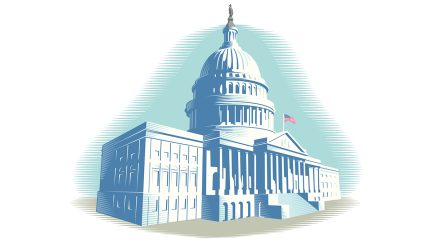Want the latest retirement plan adviser news and insights? Sign up for PLANADVISER newsletters.
Proposed Hardship Withdrawal Amended Regulations Issued by IRS
Under the proposed regulations, 401(k) plan sponsors could choose to make additional accounts available for hardship withdrawals.
The IRS has issued a Notice of Proposed Rulemaking related to hardship distributions from 401(k) plans.
The proposed regulatory amendments reflect statutory changes affecting 401(k) plans, including recent changes made by the Bipartisan Budget Act of 2018.
The proposed regulations modify the safe harbor list of expenses in current Internal Revenue Code Section 1.401(k)-1(d)(3)(iii)(B) for which distributions are deemed to be made on account of an immediate and heavy financial need by:
- adding “primary beneficiary under the plan” as an individual for whom qualifying medical, educational, and funeral expenses may be incurred;
- damage to a principal residence that would qualify for a casualty deduction under Section 165 does not have to be in a federally declared disaster area; and
- adding a new type of expense to the list, relating to expenses incurred as a result of certain disasters.
The IRS says the latter is “intended to eliminate any delay or uncertainty concerning access to plan funds following a disaster that occurs in an area designated by the Federal Emergency Management Agency (FEMA) for individual assistance.”
Separately, in the notice, the IRS extended relief relating to Hurricane Maria and California wildfires provided in Announcement 2017-15 to similarly situated victims of Hurricanes Florence and Michael, except that the “Incident Dates” (as defined in that announcement) are as specified by FEMA for these 2018 hurricanes. Relief is provided through March 15, 2019.
No more suspension of deferrals or requirement to take a loan
The proposed regulations modify the rules for determining whether a distribution is necessary to satisfy an immediate and heavy financial need by eliminating any requirement that an employee be prohibited from making elective contributions (this prohibition would only apply for a distribution that is made on or after January 1, 2020) and employee contributions after receipt of a hardship distribution and any requirement to take plan loans prior to obtaining a hardship distribution.
In addition, the proposed regulations eliminate the rules under which the determination of whether a distribution is necessary to satisfy a financial need is based on all the relevant facts and circumstances and provide one general standard for determining whether a distribution is necessary. Under this general standard, a hardship distribution may not exceed the amount of an employee’s need (including any amounts necessary to pay any federal, state, or local income taxes or penalties reasonably anticipated to result from the distribution), the employee must have obtained other available distributions under the employer’s plans, and the employee must represent that he or she has insufficient cash or other liquid assets to satisfy the financial need.
The IRS says a plan administrator may rely on such a representation unless the plan administrator has actual knowledge to the contrary. The requirement to obtain this representation would only apply for a distribution that is made on or after January 1, 2020.
More available sources of money (if the plan sponsor chooses)
The proposed regulations permit hardship distributions from 401(k) plans of elective contributions, qualified nonelective contributions (QNECs), qualified matching contributions (QMACs), and earnings on these amounts, regardless of when contributed or earned. However, plans may limit the type of contributions available for hardship distributions and whether earnings on those contributions are included. Safe harbor contributions made to a plan described in Section 401(k)(13) may also be distributed on account of an employee’s hardship(because these contributions are subject to the same distribution limitations applicable to QNECs and QMACs).
Some rules do not apply to 403(b) plans
The IRS explains that Section 1.403(b)-6(d)(2) provides that a hardship distribution of 403(b) elective deferrals is subject to the rules and restrictions set forth in §1.401(k)-1(d)(3); thus, the proposed new rules relating to a hardship distribution of elective contributions from a Section 401(k) plan generally apply to Section 403(b) plans. However, Code Section 403(b)(11) was not amended by Section 41114 of the Bipartisan Budget Act of 2018; therefore, income attributable to 403(b) elective deferrals continues to be ineligible for distribution on account of hardship.
Amounts attributable to QNECs and QMACs may be distributed from a 403(b) plan on account of hardship only to the extent that hardship is a permitted distributable event for amounts that are not attributable to 403(b) elective deferrals. Thus, QNECs and QMACs in a 403(b) plan that are not in a custodial account may be distributed on account of hardship, but QNECs and QMACs in a 403(b) plan that are in a custodial account continue to be ineligible for distribution on account of hardship.
Plan amendments
The Treasury Department and the IRS expect that, if these regulations are finalized as they have been proposed, plan sponsors will need to amend their plans’ hardship distribution provisions. The deadline for amending a disqualifying provision is set forth in Revenue Procedure 2016-37. For example, with respect to an individually designed plan that is not a governmental plan, the deadline for amending the plan to reflect a change in qualification requirements is the end of the second calendar year that begins after the issuance of the Required Amendments List that includes the change.
You Might Also Like:

403(b) Plans Have Special Considerations When Complying with SECURE 2.0

House and Senate Reintroduce Bills to Permit CITs in 403(b) Plans

IRS, Treasury Release Proposed Regulations on SECURE 2.0 Provisions
« SEC Investor Advisory Committee Calls for Stronger Best Interest Regulations